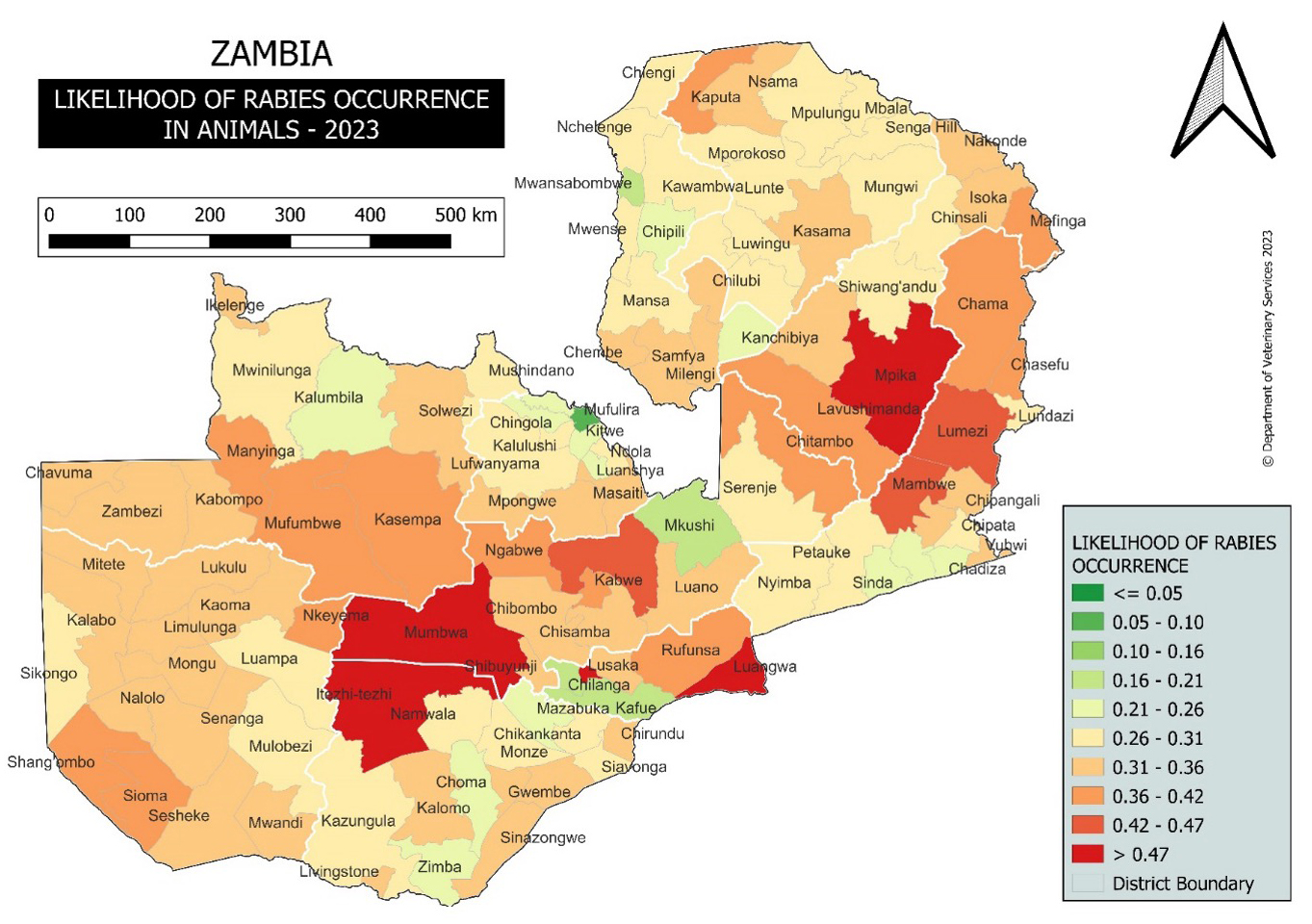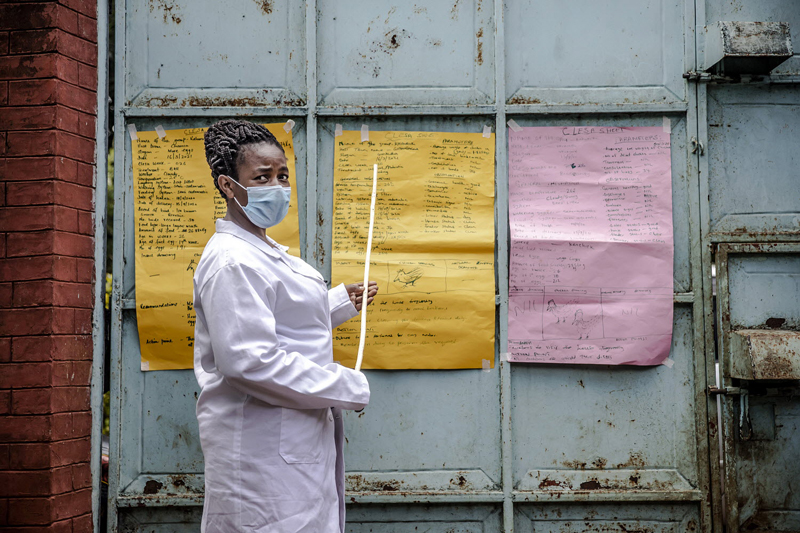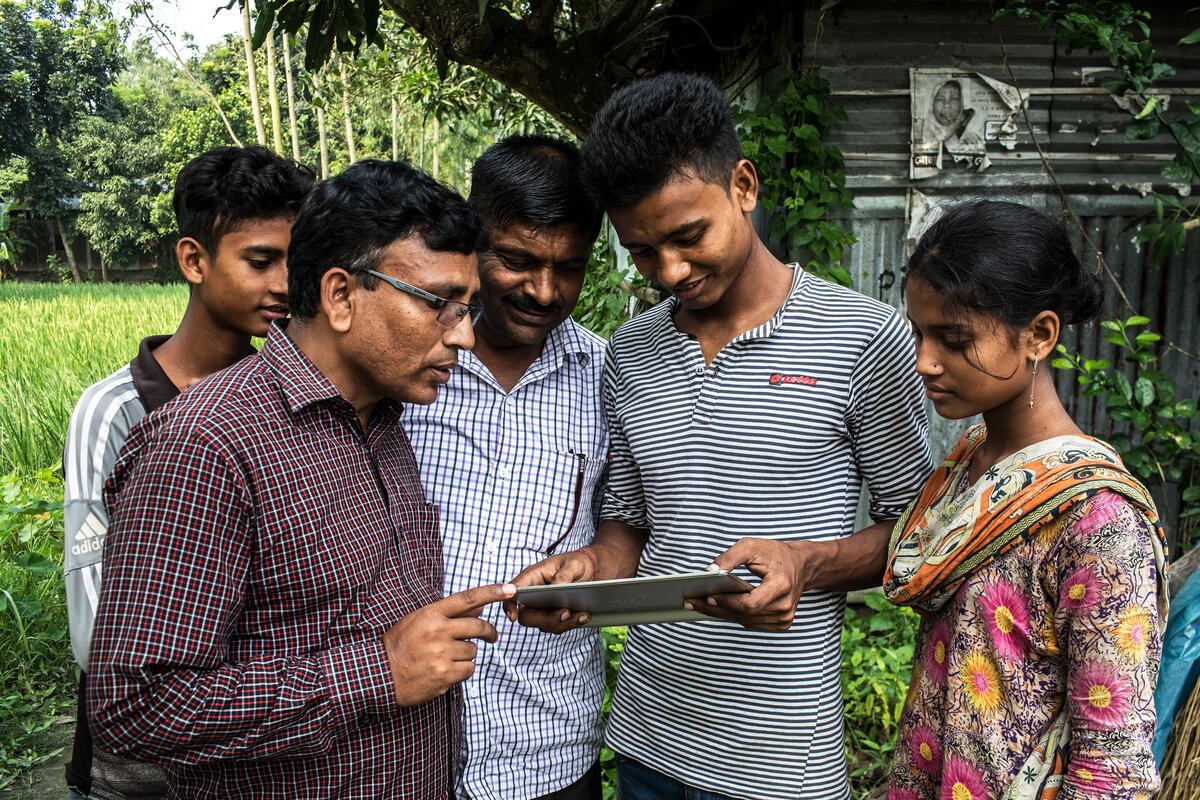How mapping livestock disease risks is transforming animal and human health in Zambia
In Zambia’s rural heartlands, livestock are more than just animals – they're currency, nutrition, and a critical source of income. Yet for decades, farmers have been left vulnerable to recurring outbreaks of deadly livestock diseases like anthrax, rabies, and foot-and-mouth disease (FMD). With limited veterinary infrastructure and traditional surveillance systems often reactive rather than preventative, these outbreaks have taken a heavy toll on livelihoods, food security, and even public health. But a quiet revolution is underway – powered not by vaccines alone, but by data, mapping, and One Health thinking.
A smarter way to predict disease: The power of risk maps
With support from FAO, Zambia has developed a cutting-edge early warning system using multi-criteria decision analysis and geographic information system (GIS) mapping. This approach creates detailed, actionable risk maps for five major livestock diseases: rabies, anthrax, cysticercosis, trypanosomiasis, and FMD. What makes this innovation stand out is how it layers multiple risk factors –from livestock density to soil type, wildlife-livestock interfaces, and historical outbreak data –into one unified map. This is made possible through the analytical hierarchy process and the use of open-source QGIS software, making it not just powerful but accessible and replicable. Instead of responding to outbreaks after they spread, Zambia’s veterinary authorities can now anticipate where diseases are likely to occur – and act early.


The boundaries and names shown and the designations used on this map do not imply the expression of any opinion whatsoever on the part of FAO concerning the legal status of any country territory, city or area or of its authorities, or concerning the delimitation of its frontiers and boundaries.
Why this matters: Lives, livelihoods, and zoonotic risk
Zoonotic diseases like rabies and anthrax don't just affect animals, they spill over into human populations. Poor rural households often lack access to post-exposure treatments or veterinary services. That’s why early warning isn’t just a veterinary issue – it’s a One Health imperative. By identifying high-risk zones, Zambia can now strategically deploy vaccination campaigns, improve biosecurity, and prioritize veterinary outreach in the most vulnerable regions. For communities, this means fewer livestock deaths, reduced transmission risk, and more secure livelihoods.
Data-driven resilience in a resource-constrained setting
What’s especially powerful about this innovation is that it works in data-scarce, resource-limited environments. Drawing on national surveillance datasets and combining them with local knowledge, the approach provides a low-cost, high-impact model for other low- and middle-income countries facing similar threats. And it’s already making a difference. Veterinary teams report better resource targeting, fewer emergency responses, and stronger community trust in disease control efforts.
A model for the future
As climate change and land-use shifts increase the risk of disease spillovers, countries need scalable, efficient tools to stay ahead of the curve. Zambia’s experience offers a blueprint: predictive, data-informed, and rooted in One Health collaboration. With further investment and regional adoption, this risk mapping system could help build a smarter, safer, and more resilient livestock sector across sub-Saharan Africa – and protect the people who depend on it.
Find out more

One Health intelligence
Operational global One Health intelligence is the first step towards the identification and mitigation of risks against emerging, endemic and epidemic diseases, and threats to environmental health and food security.

In depth
Zoonoses
Zoonotic diseases, or zoonoses, are diseases shared between animals – including livestock, wildlife, and pets – and people.

Highlights
The role of information and communication technology for One Health
In the face of growing global health challenges, particularly those arising from the complex interactions between humans, animals, and the environment, information and communication technology (ICT) is a powerful enabler of the One Health approach.
